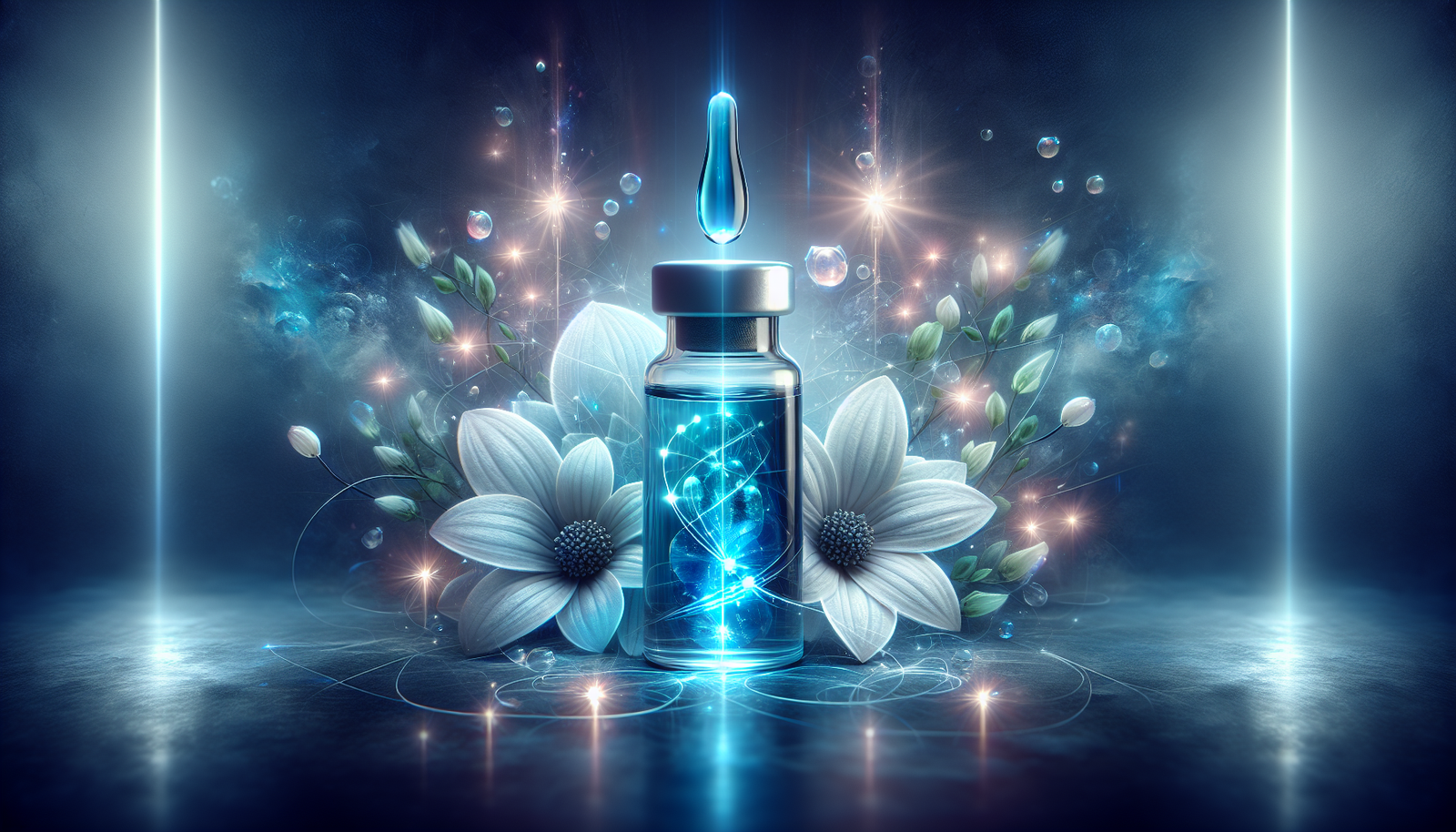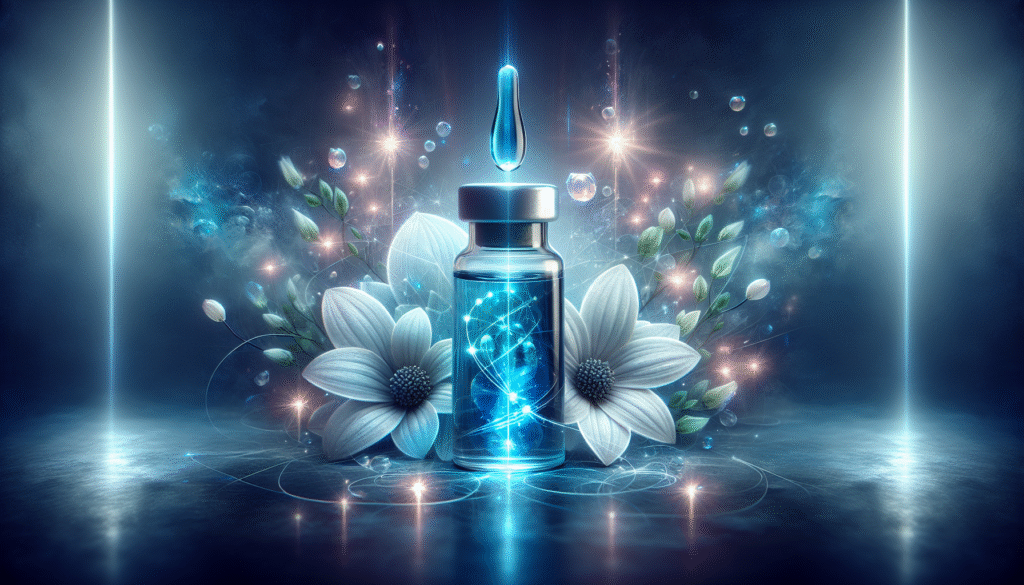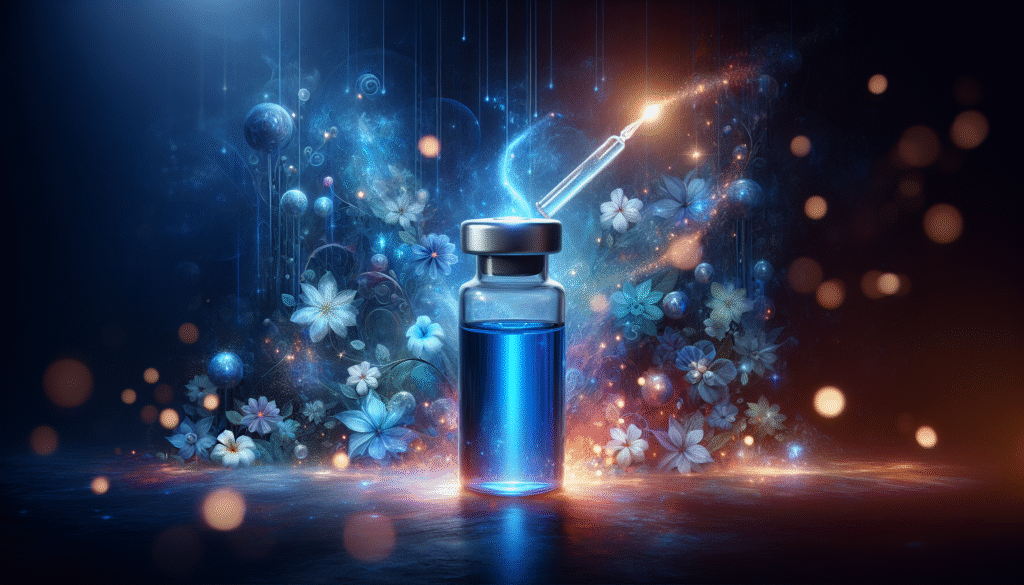
What if there were a compound that could potentially provide significant benefits in the fight against aging?
Understanding Methylene Blue
Methylene Blue is a chemical compound with a history that transcends many disciplines, ranging from medical treatment to biological research. Often recognized for its distinctive blue hue, it has intrigued scientists and researchers for decades. As you delve into the characteristics of this compound, you’ll discover its potential role in addressing some of the most pressing concerns linked to aging.

The Historical Context of Methylene Blue
Initially synthesized in the 19th century, Methylene Blue was primarily used as a dye. However, its medical applications emerged shortly thereafter, particularly in diagnosing and treating certain conditions. One notable application is its use in treating methemoglobinemia, a condition where hemoglobin cannot effectively release oxygen to body tissues. This background illustrates that Methylene Blue has been in the limelight for many years, but only recently has its relevance in anti-aging research gained traction.
The Science Behind Methylene Blue
Methylene Blue interacts with biological systems in intriguing ways. Its molecular structure allows it to participate in various biochemical processes, including acting as an electron donor and facilitating cellular respiration. At the cellular level, Methylene Blue exhibits properties that suggest it may combat the decline associated with aging.
Cellular Respiration and Mitochondrial Function
Your cells rely on mitochondria to produce energy efficiently. However, as you age, mitochondrial function tends to deteriorate, which can lead to reduced energy levels and cellular dysfunction. Methylene Blue has been shown to enhance mitochondrial respiration, potentially reversing some of the detrimental effects associated with aging. In this context, it acts as a catalyst that supports energy production and may restore vitality to aging cells.
The Role of Antioxidants
Antioxidants play a crucial role in fighting free radicals—unstable molecules that can cause oxidative damage. Methylene Blue has been recognized for its antioxidant properties, which may potentially protect your cells from this damage. By mitigating oxidative stress, Methylene Blue presents itself as a promising ally in combating the aging process.
Table 1: Comparison of Methylene Blue’s Antioxidant Properties
| Property | Methylene Blue | Common Antioxidants |
|---|---|---|
| Free Radical Scavenging | Yes | Yes |
| Mitochondrial Protection | Yes | Limited |
| Neuroprotective Effects | Yes | Varies |
Methylene Blue and Neuroprotection
As your body ages, cognitive decline becomes a significant concern. Recent studies suggest that Methylene Blue may offer neuroprotective benefits, which could slow the progression of neurodegenerative diseases such as Alzheimer’s and Parkinson’s. By improving mitochondrial function in brain cells, Methylene Blue may enhance memory and cognitive performance.
The Mechanism of Action
To appreciate how Methylene Blue works, it’s essential to understand its ability to cross the blood-brain barrier. This unique capability allows it to exert effects directly on brain tissue, where it can modulate neurotransmitter activity and reduce neuroinflammation. The combination of these factors may lead to improved neuronal health and cognitive function.

Dosage and Administration
While Methylene Blue shows promise as an ally in the fight against aging, understanding the appropriate dosage and administration method is crucial. Various studies have utilized different dosages, so it’s important to approach this compound conscientiously.
Recommended Dosage
In clinical settings, dosages can vary. Recent research has suggested that lower doses of Methylene Blue (1-4 mg/kg) may provide protective effects without significant side effects. However, if you decide to explore its use, consulting a healthcare professional is essential to tailor an approach that is safe and effective for you.
Potential Benefits of Methylene Blue
The potential benefits of Methylene Blue extend beyond just antioxidant properties and neuroprotection. Research indicates several areas where this compound could be beneficial in easing symptoms related to aging.
Enhanced Energy Levels
Many individuals report feeling fatigued as they grow older. By improving mitochondrial function and oxidative metabolism, Methylene Blue may help restore energy levels, allowing you to maintain a more active lifestyle.
Improved Skin Health
The aging process often affects skin health, leading to wrinkles and loss of elasticity. Some preliminary studies suggest that Methylene Blue applications may promote skin rejuvenation by enhancing cellular repair mechanisms.
Mood Enhancement
Mental health is an integral aspect of aging gracefully. Methylene Blue has been studied for its effects on mood disorders, offering potential benefits for an improved sense of well-being as you age.
Safety and Side Effects
While Methylene Blue is generally considered safe at low doses, it’s important to recognize that any compound can have side effects. Commonly reported side effects include:
- Nausea
- Headaches
- An allergic reaction in sensitive individuals
Because Methylene Blue can interact with other medications, particularly those affecting serotonin levels, it is prudent to consult a healthcare provider before beginning any new regimen.
Conclusion: The Future of Methylene Blue in Anti-Aging
Methylene Blue presents itself not just as a dye or a treatment for rare medical conditions, but as a potential ally in the quest against aging. Its multifaceted nature—enhancing mitochondrial function, providing neuroprotection, and improving overall cellular health—positions it as a compound worth further exploration.
As the landscape of anti-aging research continues to evolve, the prospective benefits of Methylene Blue indicate a critical opportunity for individuals seeking to enhance their quality of life in later years. Although research is ongoing, and much remains to be learned, taking steps to understand Methylene Blue’s properties could be a profitable endeavor on your path towards graceful aging.
Final Thoughts
The topic of aging is profound and complex, often eliciting a mix of fears and aspirations. However, armed with knowledge about compounds such as Methylene Blue, you can empower yourself. Beyond mere existence, the focus shifts towards thriving—a change that not only redefines aging but also reiterates that the pursuit of health and vitality never truly ends. Stay informed and proactive as you navigate the journey of your own longevity.